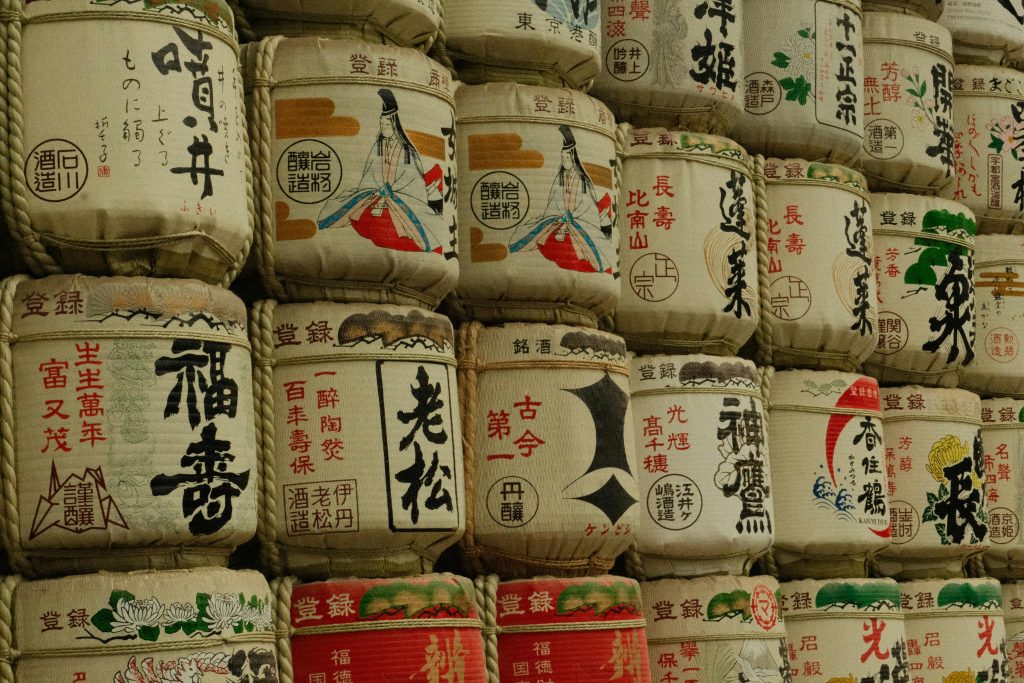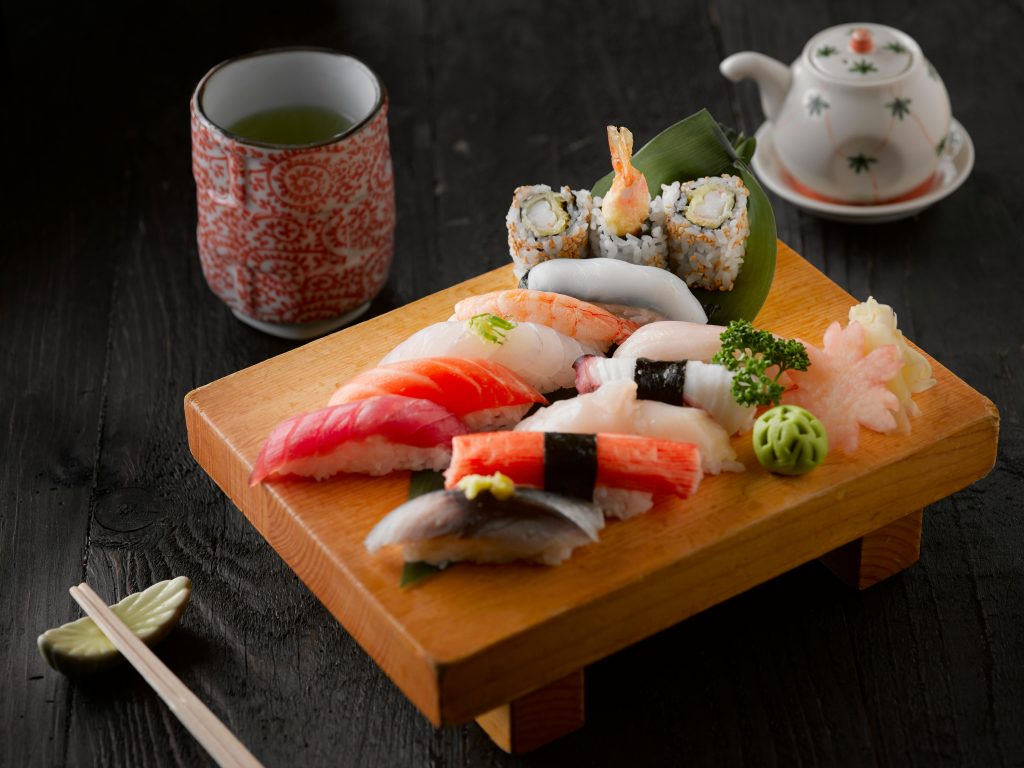
What is Sake? It is a traditional Japanese rice wine that has been brewed for centuries. Despite often being called “rice wine,” sake is actually closer to beer in its brewing process, as it is made by fermenting rice rather than fruit. With a history deeply embedded in Japanese culture, it is not only enjoyed as a beverage but also plays an important role in cooking, rituals, and celebrations.
How is it Made?
Sake production is a meticulous process that requires precision, time, and craftsmanship. The core ingredients are simple: rice, water, yeast, and koji mold (Aspergillus oryzae), but the brewing process is complex.
Traditional Brewing Process
- Rice Polishing – The outer layers of rice grains are milled away to remove proteins and oils that can affect the flavor. The degree of polishing determines the sake’s classification (e.g., daiginjo has a high level of polishing).
- Washing and Soaking – The polished rice is washed and soaked in water to prepare for steaming.
- Steaming – The rice is steamed to make it suitable for fermentation.
- Koji Cultivation – A special mold called koji is added to some of the rice to help convert starches into fermentable sugars.
- Yeast Starter (Shubo) – Yeast is added to a small batch of rice, koji, and water to develop an active fermentation culture.
- Main Fermentation (Moromi) – The yeast starter is combined with more rice, water, and koji in multiple stages to create the mash.
- Pressing and Filtering – Once fermentation is complete, the sake is pressed to separate the liquid from the solids.
- Pasteurization and Aging – Most sake undergoes pasteurization before being aged for a few months to develop its flavors.
- Bottling – The final product is filtered and bottled for distribution.
The entire process takes several months and requires expertise to balance flavors, alcohol content, and aroma.

Types of Sake
What types of Sake? It comes in various styles, each with its unique characteristics. The main types include:
| Type | Rice Polishing Ratio | Characteristics | Best Served |
|---|---|---|---|
| Junmai | No polishing requirement | Rich, full-bodied, umami-rich | Warm or room temperature |
| Honjozo | 70% or less remaining | Light, smooth, slightly fragrant | Slightly warmed or chilled |
| Ginjo | 60% or less remaining | Fragrant, fruity, delicate | Chilled |
| Daiginjo | 50% or less remaining | Highly aromatic, refined, complex | Chilled |
| Nigori | Unfiltered | Cloudy, sweet, creamy | Cold |
| Sparkling Sake | Varies | Effervescent, light, refreshing | Chilled |
How is Sake Traditionally Enjoyed?
It is enjoyed in various ways, depending on the type, occasion, and personal preference.
Serving Temperatures
It can be served at different temperatures, and the temperature affects its flavor:
- Hot Sake (Atsukan): Enhances umami flavors; best for full-bodied sake like Junmai.
- Warm Sake (Nurukan): Balances sweetness and acidity.
- Room Temperature (Hiya): Retains its natural balance and complexity.
- Chilled Sake (Reishu): Best for fragrant and delicate sake like Ginjo and Daiginjo.
Traditional Sake Drinking Vessels
It is often served in small cups called ochoko or sakazuki, and poured from a flask called a tokkuri. For chilled sake, a glass wine-like vessel may be used. In formal settings, it is poured for others, not for oneself, as a sign of respect.
Pairing Sake with Food
It pairs well with many types of food, particularly Japanese cuisine. Here are some classic pairings:
- Sashimi & Nigiri Sushi – Pairs well with clean, light sake like Ginjo.
- Yakitori (Grilled Chicken Skewers) – Best with a dry, umami-rich sake like Junmai.
- Tempura – Complements crisp, dry sake.
- Miso Soup – Enhances the umami flavors of miso-based dishes.
- Cheese – Surprisingly, sake pairs well with creamy cheeses due to its mild acidity.
In Cooking
Beyond drinking, sake is a key ingredient in Japanese cooking. It adds depth, balances flavors, and tenderizes ingredients.
How it is Used in Cooking
- Marinades – Tenderizes meats and seafood while removing strong odors.
- Soups and Stews – Enhances broths and adds depth to dishes like miso soup.
- Sauces – A common ingredient in teriyaki sauce, ponzu sauce, and sukiyaki broth.
- Steamed Dishes – Used in steaming fish and vegetables to enhance natural flavors.
- Rice Dishes – Some Japanese rice dishes incorporate sake for added fragrance and complexity.

InJapanese Culture and Festivals
Sake is deeply connected to Japanese traditions, religious ceremonies, and celebrations.
Shinto Rituals and Weddings
- Kagami Biraki – A sake barrel is broken open at special events, symbolizing good fortune.
- San-san-kudo – A wedding ritual where the bride and groom take three sips of sake from three different cups, signifying their union.
- New Year Celebrations – People drink O-toso, a spiced sake, to ward off illness and bring good fortune.
Sake Festivals and Breweries
Japan hosts many sake festivals, especially in regions known for sake production, like Niigata, Hiroshima, and Kobe. Visitors can tour breweries, sample different styles, and learn about the brewing process.
Around the World
While deeply rooted in Japan, it has gained international recognition. Sake breweries exist outside Japan, particularly in the U.S., Canada, and Australia, producing high-quality sake adapted to local tastes.
Final Thoughts
Sake is an integral part of Japanese culture, cuisine, and tradition. Whether enjoyed warm or cold, in a toast with friends, or as an essential cooking ingredient, it brings a unique experience to every sip or dish.
From its meticulous brewing process to its role in Japanese celebrations, sake’s history and versatility make it a fascinating subject. Next time you try it, take a moment to appreciate the craftsmanship and tradition of this unique wine. Cheers—or as they say in Japan, Kanpai!
Curious about more wine terms and insights? Visit our Wine Wiki section and explore the basic wine terms for expert definitions and tips!